The idea of gardening with the moon is an ancient one. People have been doing it for as long as we’ve kept records about gardening.
Websites offer advice on which part of the lunar cycle will help your veggies grow big and juicy. Or they may guide you to which astrological phase has the most influence on the flowering of your bushes.
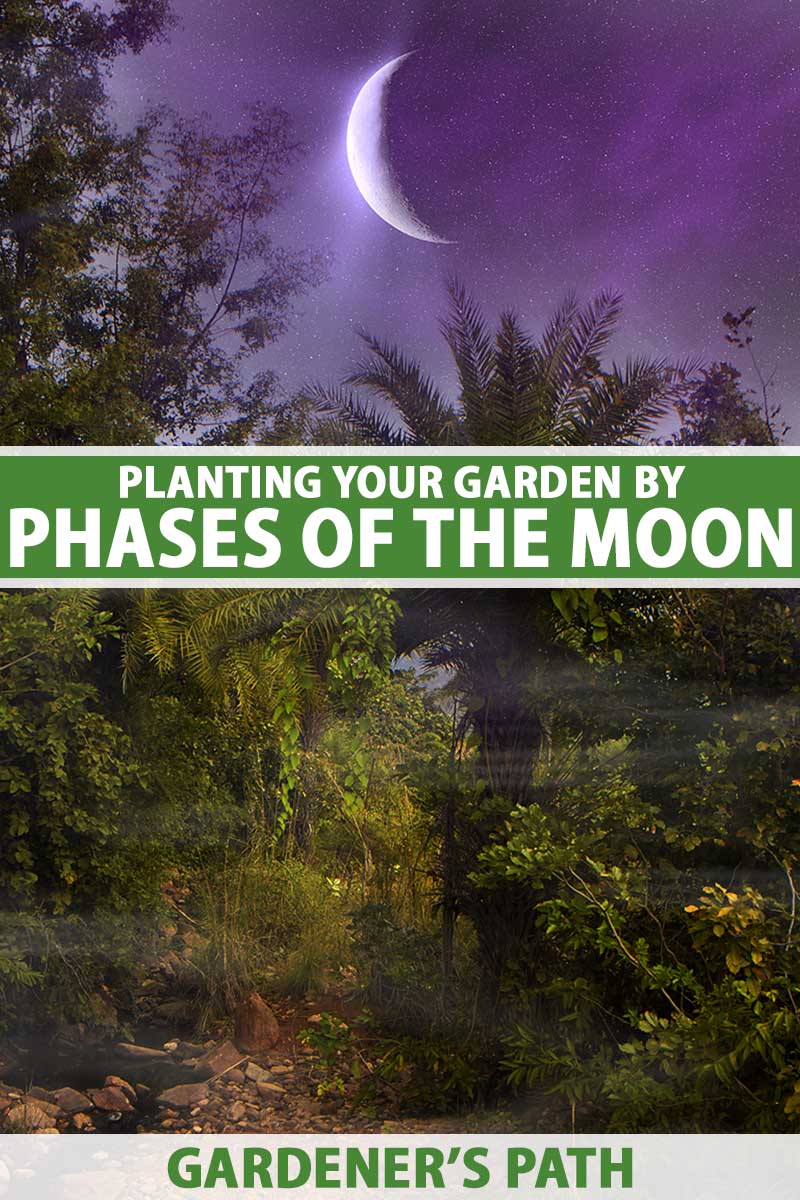
We link to vendors to help you find relevant products. If you buy from one of our links, we may earn a commission.
But just because we’ve done something for a long time, that doesn’t make it necessarily useful.
If you’ve found yourself asking if there is any truth to the idea of moon phase gardening, welcome. We’ve wondered the same thing and so we went searching for answers.
We’ll look at what the science says and doesn’t say about the idea. Here’s what you can expect coming up:
What You’ll Learn
While there’s nothing wrong with continuing a tradition like planting by the lunar phases, even if it hasn’t been validated by science, it’s always nice to know what the research has to say.
So let’s jump in and start separating fact from fiction.
The History
Planting by the moon is the idea that the Earth’s largest satellite has the ability to improve or harm your growing plants.
The lunar calendar is divided into 28-day cycles and proponents say that planting during a particular period of the lunar cycle can help maximize your plants’ health and harvest.
The idea is that, say, if you plant seeds during the full moon, the gravitational pull is stronger and so there will be more water being pulled to the surface of the Earth and thus available to the seeds.
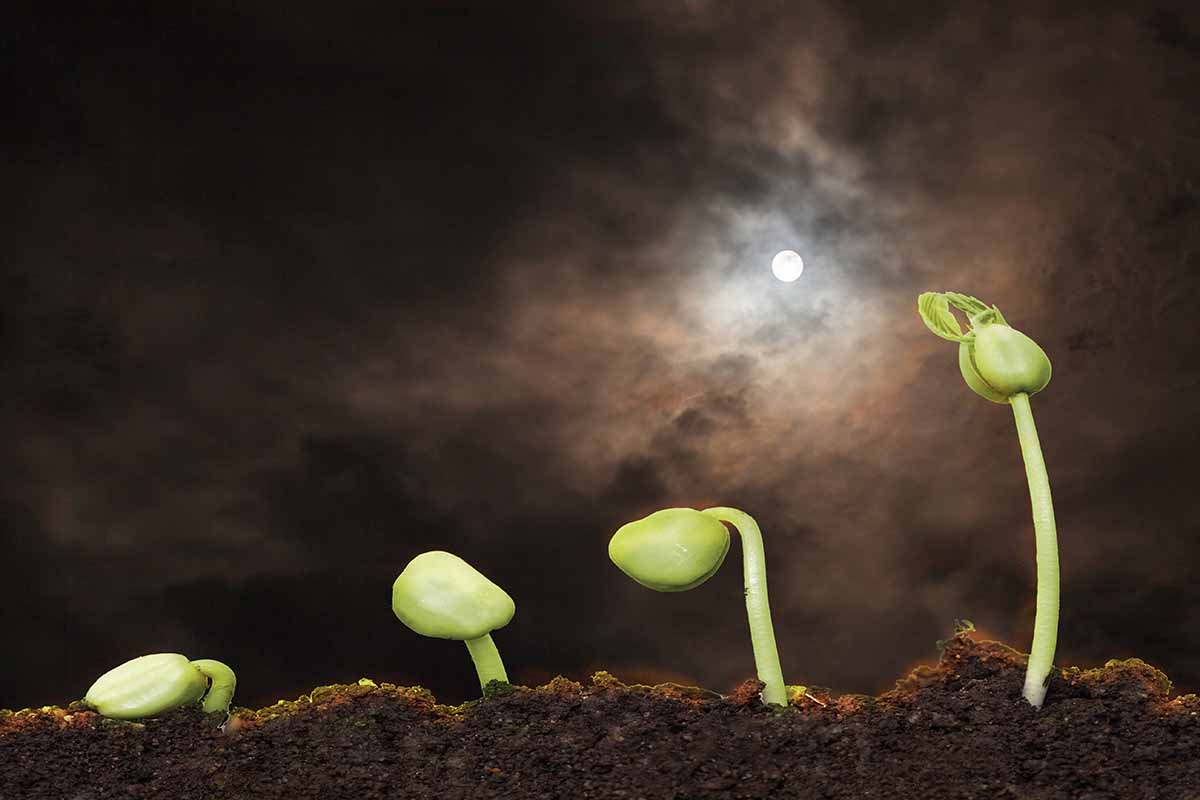
Perhaps the reason that planting by the lunar phases endures is that the practice has been around for a long, long time. It’s hard to break with tradition, even if there is no merit to the practice.
The Roman natural philosopher Pliny the Elder repeatedly referred to gardening by the lunar phases in his book “The Natural History.”
“The dracunculus I have referred to is dug up when the barley is ripening and the moon is crescent,” he writes, for instance.
He also wrote that the Celts would harvest mistletoe on the fifth day of the new moon.
Ancient Celts, Mayans, Native American people, and many others practiced some form of lunar gardening. We must call it the harvest moon for a reason, right?
On top of our long history of watching the moon to take cues about gardening, there’s the fact that humans, animals, and plants have natural circadian rhythms, so it clearly has some sort of influence on us.
The question is whether it has enough of an influence to warrant harvesting and planting at certain times during the lunar cycle.
The Moon’s Influence on Water
One of the major elements that people point to is the moon’s influence on the water on and in the Earth.
Proponents of lunar phase gardening say that the moon draws water up higher in the soil (just as it influences the tides) during certain times of the month. This supposedly makes water more available to plants.
“The earth is in a large gravitational field, which is influenced by the moon and the sun. The moon pulls the tides and likewise has an effect on the soil water, causing it to rise and become available to plants,” The Vancouver Sun reported in 2014.

But in reality, scientists say that it doesn’t have all that large of an influence on water outside of the ocean.
It has a massive impact on the ocean because there is a great deal of water volume in one place. But in Lake Superior, which is the third-largest freshwater lake on the planet, the tidal influence is only two centimeters.
If we translate that to the water in the soil, which is separated by the organic and non-organic material that makes up the surface of the planet, it’s unlikely that the moon is causing a large enough rise in water levels to impact plant growth.
The moon doesn’t have much of an influence on the liquid in our bodies, either. This is partially because there are so many other factors acting on our bodies that we don’t notice the lunar influence.
That’s also part of the reason that we don’t see much impact from it on smaller water bodies. There are other influences at play that have a bigger impact, such as rivers flowing in and out of lakes.
As Clemson extension agent Jackie Jordan told WLTX News 19 meteorologist Alex Calamia, water doesn’t ebb and flow inside of plants.
If it did, the sap would travel up and down each day, which would have a negative impact on the plant. We would also see wilting as the water flowed up and down in concert with the lunar cycle.
Similarly, we would be feeling the impact of its push and pull on the liquid in our bodies if it had such a large impact on plants.
The bottom line is that the moon likely doesn’t have much of an influence on the groundwater available to plants or the water inside the plants themselves. But that doesn’t mean it has no impact at all on them.
The Moon’s Influence on Plants
Okay, so the moon likely doesn’t have all that large of an influence on smaller bodies of water or water in soil. Does that mean that it has absolutely no impact on anything but oceans and really big lakes? Not at all!
Coral, for instance, seems to spawn in time with the lunar cycle. Werewolf plants (Ephedra foeminea) send out pollen in time with the full moon.

The moon also influences gravity, which tells roots to grow down rather than up.
It also appears that it might cause the foliage on some plants to rise and fall, similar to the movement of the tides. We have no idea why this might be so, but it could be that the moon is causing the water in the plant to shift.
Some phytoplankton require moonlight for photosynthesis, though obviously this isn’t a plant in the average garden. Still, this shows that it can and does influence certain plants or certain elements of plant life.
Even more promising is the idea that moonlight (or lack of it) can alter seed germination.
Scientists at the USDA Agricultural Research Service found that certain weed species had lower germination rates when the soil was tilled at night during the time of low moonlight. The researchers believe that the lack of light influences seed germination.
There needs to be a lot more research to figure out what is happening when it comes to lunar cycles and plants. But it could open up a whole new world of inquiry into the field of moon phase gardening.
To Garden By Lunar Cycles or Not?
It’s likely that the moon has more impact on life on Earth and specifically in our gardens than we realize, but science just hasn’t been able to prove that gardening with the phases of the lunar cycle has any merit.
Having said that, this practice isn’t exactly popular in modern science, so it hasn’t received much attention or research.

There is certainly much more to discover.
Still, the information that we have so far seems to point to the idea that the practice isn’t exactly based on good science. If you find that planting during a certain phase of the lunar cycle works for you, go for it!
There’s certainly no harm in the process unless it prevents you from planting or harvesting during the appropriate window. But if you like to stick to scientifically-proven practices, then don’t worry about what’s going on with the moon when you garden.
You can, however, take advantage of a full moon to stay up late gardening in all the extra light. That’s why we call it a harvest moon, because it provides bright light by which to extend the harvest hours.
Do you practice moon phase gardening? Have you found that it influences your crops? Tell us about it in the comments section below!
If you’re curious to learn about some other common garden myths out there, we have some excellent articles that can shed some light on the subject, including:
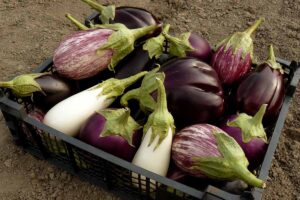
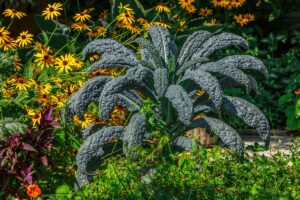
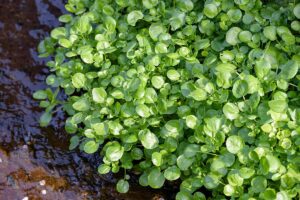
Of course the moon affects it. While unreliable science has given us 2,4-D, Roundup and chemical fertilizers, depleted soil creating absolutely nutritionally void laden with pesticides that has no flavor. Gardening by the Moon, familiar to Biodynamic Farmer’s, Agro Ecology and throughout time Indigenous and Folk wisdom producing vibrant, delicious nutritionally dense and organic food…
Take a course on Biodynamics, grow by the moon and you will see magic. Or just observe your plants at the full moon and how much they grow. How can gardeners NOT observe this?
Thanks for weighing in, it’s definitely a fascinating topic.
This is a disappointing article. Having started by saying “we’ll look up what the science says and doesn’t say about the idea” you give one uninteresting scientific reference, a couple of media references, including a stupid comment from Jackie Jordan about sap going up and down, and an unreferenced comment about the tidal movement of Lake Superior, which I question. I think you will find that the centre of Paris has been measured to have a greater lunar movement than that. The altitude of Paris certainly does change slightly according to the lunar cycle because a university academic said so… Read more »
Thanks so much for weighing in. I wholeheartedly agree, this is a topic that requires more experimentation to fully understand. I can’t wait to see what science has to say about it. In the meantime, if you’d like to read up on the tides in Lake Superior, here are a few resources:
https://oceanservice.noaa.gov/facts/gltides.html or https://www.canr.msu.edu/news/great_lakes_seiches_often_mistaken_for_tides_kinnunen15
My mother “grew some of the most gorgeous purple hull pea plants you ever did see- a field of them, actually, during [her] first year of marriage”, my dad began the tale. “Talk of the town she was! Envied by all the little ladies her own age and up-and not because of her red hair, either, but for her “magical green thumb”, as Aunt Bea dubbed it! Oh, I was a proud fella, I tell ya! Everywhere we went someone was a braggin’ on my little red head and I’d just beam with pride-until your mama’s elbow met my side… Read more »
I just checked in a NASA article that the gravity pull of the moon does not change with phases. So there is that. The tides go up and down every day, regardless of phases. So there’s that too. Other than the extra light in a full moon, I don’t think sowing by the phases has any merit.
Here’s a link to an article from NASA that says the tides do change with the cycles of the moon: https://moon.nasa.gov/moon-in-motion/earth-and-tides/tides
The tides are higher during new and full moons. That being said, there is nothing that says it affects the water in plants or anything like that from NASA…
Understanding how the phases of the moon affects plant growth is a very simple matter. Sunlight is what propels plant growth. Simply watch a sunflower move in the direction of the sun to confirm the suns influence. As the moon waxes the amount of sunlight in it reflects to the earth increases, causing the plants be drawn towards the moon. As the moon wanes, the amount of reflected sunlight decreases, and I know the plants energy is diverted into its roots. Accordingly, planting on the new moon encourages plant growth upwards, while it is optimized for harvest at the full… Read more »
My trade was in market gardening sometime ago and I’ve kept my love of gardening after leaving. I’ve heard a lot of things over time myth and some fact yet moon phase gardening can confidently be put in the myth Hokus pokus category. I have never used it and have never struggled with growing anything. I plant when I feel like it and sometimes just as experiments. That’s what gardening is all about experimenting. I watched a so called biodynamic follower dissolve cow poo from a cows horn that had been buried to make a magical poo thing. I watched… Read more »
Hi Moz, thanks for weighing in! I have to agree that I’ve never noticed any benefit to planting with the cycles of the moon. Though during those times when I’m struggling with a specific plant, I’m willing to try just about anything!